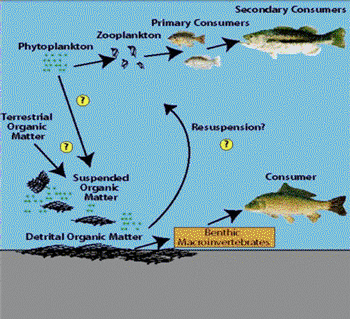
You are what you eat
Food Web and its Function
Why Study Food Webs?The study of food webs is critical to understanding the route by which pollutants get concentrated (bioaccumulated) up the food chain (e.g., in game fish such as bass). Current examples of bioaccumulation that the USGS is studying are mercury in the Florida Everglades, selenium in the Central Valley, and selenium and mercury in San Francisco Bay.The knowledge of how species interrelate is also necessary to understanding how natural and man-made environmental pressures affect ecosystems. These include destructive pollution (toxic chemicals such as PCBs, DDT, mercury, and selenium) which can break or alter the food chain, and nutrient pollution which can shift whole ecosystems toward nutrient-hungry species. An example of the latter is crop fertilizers, sewage, and animal waste escaping into lakes and streams, causing massive algae blooms at the expense of fish and other species. See some examples
of other applications of isotopes to food web studies.
|
|
||||||||||||
This page was last changed in June 2003.
To the USGS Home Page
To the Water Resources Information Home Page
